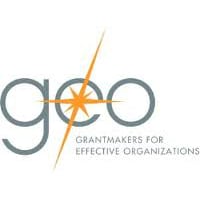 What if we were to take an enterprise view of nonprofit funding? Lori Bartczak, Grantmakers for Effective Organizations, takes up the question with a view to building greater capacity for collaboration… The shining examples of collaboration in the nonprofit sector are inspiring. In these stories, a range of diverse stakeholders rally around a common vision and work together to advance ambitious goals. They work together to collect data to track progress on the issues and are able to make mid-course corrections in response to what they learn. They are initiatives any funder would be proud to part of.
What if we were to take an enterprise view of nonprofit funding? Lori Bartczak, Grantmakers for Effective Organizations, takes up the question with a view to building greater capacity for collaboration… The shining examples of collaboration in the nonprofit sector are inspiring. In these stories, a range of diverse stakeholders rally around a common vision and work together to advance ambitious goals. They work together to collect data to track progress on the issues and are able to make mid-course corrections in response to what they learn. They are initiatives any funder would be proud to part of.
But behind the scenes, the necessary ingredients for effective collaboration are not so glamorous. They are things that fall into the category of “infrastructure” or “overhead” — things like collective leadership predicated by intentional relationship-building, data and technology systems, and administrative functions. These are items many funders are reluctant to support; caps on overhead and a strong preference for program-restricted support indicates that. Yet without this infrastructure, collaboration will not succeed.
“In gardening, we are aware of how you have to pay attention to the soil, continuously mending and caring for it in order to ensure a plant’s growth,” said Victor DeLuca, president of the Jessie Smith Noyes Foundation. “That same nurturing, feeding and watering is necessary to help facilitate the growth of strong organizations and collaborations.”
This care and feeding must happen both for individual organizations and for the collaboration as a whole.
Earlier this year, GEO spoke with nonprofit leaders across the country and asked them what they needed from their funders to help enable them to collaborate with others. The resounding answer was organizational slack.
“We don’t have the capacity or time on a day-to-day basis to think about capacity. I think about big-picture things on weekends,” said one nonprofit leader.
The fact that 80 percent of grant dollars are program restricted enforces this mindset. Nonprofit leaders need some unrestricted and flexible support to allow them to think at the systems level and develop relationships with others.
In their environmental justice work, the Noyes Foundation recognized that many activist organizations in the Southeast were critical to the cause but needed capacity-building support, and fast. In response, the foundation established the Special Assistance Grants program, which allows foundation staff to make grants of up to $7,500 without board approval, sometimes within a few days of request. Special Assistance Grants have paid for things like technology systems, travel expenses or board training — all necessary expenses for collaborative work but items rarely covered through program-restricted funding.
When supporting a network or collaboration, funders can have tremendous impact by supporting the infrastructure or backbone that holds the many moving pieces together.
In 2003, the Austin Community Foundation granted seed funding to start the Adoption Coalition of Texas in order to help more children in foster care in Texas get adopted. Today the foundation continues to support the glue of the coalition by handling all the coalition’s administrative and back-office functions and through long-term, flexible support. The results of this coalition are impressive—in the past five years there has been a 70 percent increase in adoptions in the state.
In addition to prioritizing support for infrastructure, funders who want to support collaboration must be ready to be in it for the long haul.
“This type of funding is not for the timid,” de Luca said. “What you are doing is funding work that you hope is truly transformational — and that takes time.”
…
Your Turn:
[poll id=’14’]
